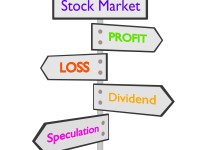In early 2013, I shifted 20% of my capital from high-yield stocks to high-yield corporate bonds. I did it because I bought into the mantra that a mix of stocks and bonds would be safer than a 100% stock portfolio. Well, that definitely did not work for me. By mid-2014, I was finally out of bond investing, with a net loss and hopefully a little wiser. Here is what happened and what I learned.
All told, my bond investing experiment lost me $2740 out of pocket. I invested $81,321 in 9 corporate bond positions. During the 18 plus-or-minus months that I held these bonds, I collected $6400 in interest. But, in the end, my total sale proceeds from the 9 positions was only $72,181. And that left me with that net out-of-pocket loss of $2740, even after factoring in the interest payments. But I actually lost more than that.
I also lost the opportunity to make $9000 to $10,000. That is how much I would have made over 18 months in dividends from my portfolio’s stocks if I had put that $81,000 in them instead of into corporate bonds. So, the way I figure it, my bond investing adventure cost my portfolio about $12,000 or so in book value. Now, what and how did that happen?
I bought those bonds after careful financial analysis. I put the bond-issuing companies through the same rigorous financial screening that I use to select stocks. Plus, I added the extra step of reviewing the Moody’s Report on the company and the bond to make sure I would have an acceptable chance and rate of recovery if for some reason the company was forced into bankruptcy and liquidation. I thought I had covered all my bond investing bases. But — out of naive ignorance — I did not take into account corporate “human” nature.
I got blindsided by voluntary bankruptcies. Months after adding those 9 bonds to my investment portfolio, I learned first-hand about that nasty practice. A company’s management wants to borrow more money and its lender banks want to lend it. But the amount of debt already on the company’s balance sheet prevents it. The solution is to “deleverage”; that is to dump as much as possible of the company’s existing debt. And so the company’s management and its lender banks together cook up a deal to put the company through a voluntary bankruptcy that wipes out its stockholders and erases its corporate bond debt — while keeping the company in operation, its management employed and in place, and its lender banks shielded from loan losses. Outrageous but perfectly legal. And 4 of the companies I had invested in either did just that or strongly signaled that they would do it. So I had to exit those bond investing positions at great loss or risk losing even more.
Then I got whacked some more by tender offers. That is when a company “calls in” its bonds, forcing the bondholders to turn in the bonds for a cash payout determined by the company at its sole discretion. A company will do that if its financial fortunes have improved enough to allow it to borrow at a lower interest rate than it is paying out on its existing bonds. So it will issue new bonds at a lower interest rate and use the proceeds to buy off its previous more interest-expensive bonds. Again, perfectly legal and good business to boot. But a disaster for bondholders that could have made a profit on those bonds as their value rose due to the company’s improving financial condition. And another 4 of the 9 companies I had invested in did just that. I had to surrender all 4 bond investing positions and with them the chance for a more profitable market exchange.
For only 1 of the 9 bond positions I entered did events proceed “normally,” letting me collect interest while the bond’s price rose and in due course allowing me to execute my standard ten-percent-gain position exit.
So, lesson learned. And goodbye bond investing. Good riddance.
The takeaway: High-yield / high-risk bond investing is a very different animal than high-yield / high-risk stock investing. In high-yield / high-risk bond investing, the bond-issuing company is actually positioned as your financial adversary. This causes you to have high risk on both the downside and the upside. And that is too much risk to take.
# # #
image courtesy of jesadaphorn at FreeDigitalPhotos.net








Recent Comments